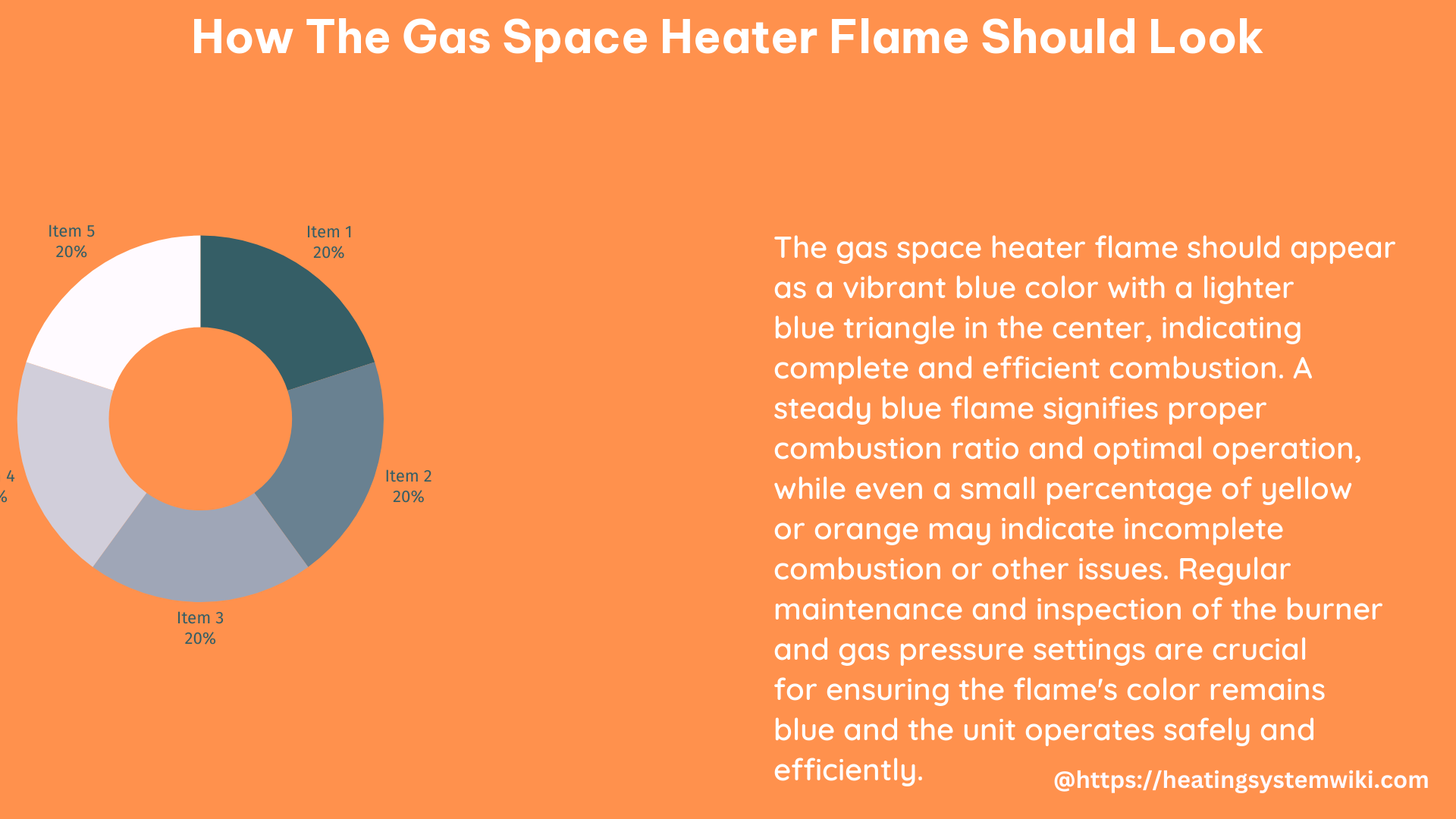The ideal flame for a gas space heater should be a roaring blue flame with a light blue triangle in the middle. This indicates that the gas heater is properly utilizing its gas supply, and the combustion process is efficient and effective. Blue flames are the hottest, meaning the heater is producing the maximum amount of heat. A blue flame also suggests that the interior of the heater is clean and free of soot and dirt buildup.
Technical Specifications for the Ideal Gas Space Heater Flame
-
Color: The flame should be a vibrant blue color with a light blue triangle in the center. This color indicates complete combustion of the gas, which is essential for efficient heat production and minimizing the risk of carbon monoxide (CO) emissions.
-
Flame Size: The flame should be even and cover the entire burner surface. The flame size should be proportional to the BTU (British Thermal Unit) rating of the heater. Typically, a 20,000 BTU heater should have a flame size of around 4-6 inches in height and width.
-
Flame Sound: The flame should burn steadily and quietly, with no popping, crackling, or hissing sounds. Any unusual noises may indicate a problem with the gas pressure, air-fuel mixture, or burner components.
-
Flame Temperature: The ideal flame temperature for a gas space heater should be between 1,800 and 2,200 degrees Fahrenheit (982 to 1,204 degrees Celsius). This high temperature ensures complete combustion and maximizes heat output.
-
Oxygen Supply: The heater should receive an adequate supply of oxygen for proper combustion, with an air-to-gas ratio of around 10:1. An insufficient oxygen supply can lead to incomplete combustion and the production of harmful byproducts, such as carbon monoxide.
-
Carbon Monoxide Levels: The heater should produce minimal levels of carbon monoxide, well below the safe limit of 35 parts per million (ppm). Excessive CO levels can be a serious health hazard and indicate a problem with the combustion process.
DIY Tips for Checking and Adjusting the Gas Space Heater Flame

-
Flame Color Inspection: Visually inspect the flame to ensure it is a vibrant blue color with a light blue triangle in the center. If the flame is any other color, such as yellow, orange, or red, it may indicate an issue with the combustion process.
-
Flame Size Evaluation: Measure the flame size to ensure it is proportional to the heater’s BTU rating. Use a ruler or tape measure to check the flame height and width, and compare it to the manufacturer’s specifications.
-
Flame Sound Monitoring: Listen carefully to the flame for any unusual noises, such as popping, crackling, or hissing. These sounds may indicate a problem with the gas pressure, air-fuel mixture, or burner components.
-
Air Filter Maintenance: Regularly clean or replace the air filter to ensure an adequate supply of oxygen for proper combustion. A dirty or clogged air filter can restrict airflow and lead to incomplete combustion.
-
Venting Inspection: Ensure the heater is properly vented to the outside, with no blockages or restrictions. Improper venting can cause a buildup of carbon monoxide inside the home, which can be extremely dangerous.
-
Flame Adjustment: If the flame is not burning correctly, it may be necessary to adjust the gas pressure or air-fuel mixture. This should be done by a qualified professional, as improper adjustments can be hazardous.
Remember, maintaining the proper flame appearance and characteristics is crucial for the safe and efficient operation of your gas space heater. Regular inspections, maintenance, and adjustments by a qualified technician can help ensure your heater is running at its best and minimizing the risk of carbon monoxide exposure or other safety concerns.
